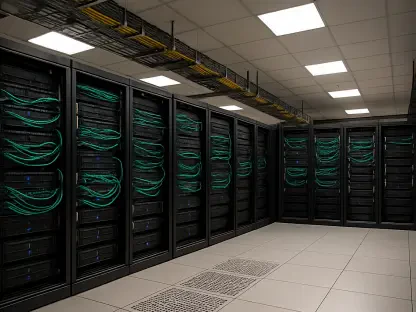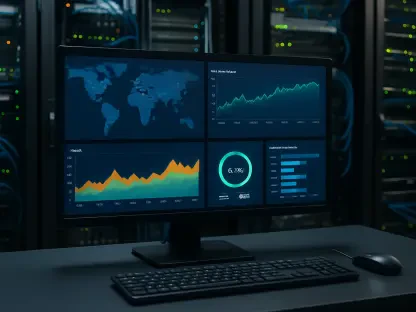Imagine a digital landscape where web applications deliver instantaneous responses, regardless of a user’s location, creating flawless experiences in gaming, online shopping, or even immersive virtual reality environments without the slightest delay. This vision, once a distant aspiration, is now becoming a tangible reality thanks to the rise of edge computing. Unlike conventional cloud systems that rely on centralized servers often located far from end users, edge computing shifts data processing and storage closer to the point of interaction, drastically reducing latency and enhancing overall performance. This transformative technology addresses the growing demands of modern users who expect speed, reliability, and personalization in every digital interaction. From enabling real-time decision-making to fortifying security measures, edge computing is redefining the capabilities of web applications. This article explores the profound ways in which this innovative approach is reshaping the digital world, offering businesses and developers new tools to meet escalating user expectations.
Breaking Barriers with Performance Optimization
Edge computing directly confronts a persistent challenge in web application delivery: the frustrating delays caused by latency. By processing data at or near the user’s location rather than transmitting it to distant centralized data centers, this technology slashes the time it takes for information to travel back and forth. Consider the impact on online gaming, where split-second reactions can determine victory or defeat, or on e-commerce platforms where immediate product recommendations can influence a purchase decision. Edge computing ensures these interactions happen without noticeable lag, providing a seamless user experience that feels almost instantaneous. This reduction in wait times is not merely a convenience but a critical factor in retaining users who might otherwise abandon slow-loading applications. The ability to deliver such speed offers a significant competitive advantage in industries where every moment counts.
Beyond just minimizing delays, edge computing redefines performance expectations by enabling applications to handle high volumes of data with efficiency. In scenarios like live video streaming, where buffering can ruin the viewing experience, or financial trading apps where microseconds can affect transactions, the proximity of processing power ensures smooth operation even under heavy demand. This capability allows businesses to cater to global audiences without sacrificing quality, as data doesn’t need to traverse continents to reach a server. Moreover, the technology supports sudden spikes in user activity—think of a viral social media event or a major sales promotion—without crashing or slowing down. By optimizing resource allocation closer to the source of demand, edge computing helps maintain consistent performance, ensuring that applications remain responsive no matter the circumstances. This reliability transforms how companies approach user engagement, setting a new standard for digital interactions.
Integrating Seamlessly with Web Development Trends
Edge computing aligns perfectly with the intricate frameworks that underpin today’s web applications, such as microservices and application programming interfaces (APIs). Rather than merely caching static content near users, it executes dynamic application logic at the edge, enabling sophisticated real-time functionalities without the typical delays of centralized processing. Imagine a news application that instantly curates articles based on a user’s geographic location or a streaming platform that adjusts video resolution in real time to match fluctuating network conditions. These capabilities allow developers to create highly interactive and adaptive applications that respond to user needs on the spot. This integration not only enhances speed but also empowers web applications to offer personalized experiences that feel intuitive and tailored to individual preferences.
Furthermore, the synergy between edge computing and modern web architectures facilitates scalability in ways previously unattainable. As applications grow more complex with interconnected services and data streams, the ability to distribute processing tasks across multiple edge nodes ensures that no single point becomes a bottleneck. This distributed approach supports the rapid deployment of new features and updates, as developers can test and roll out changes at localized levels before scaling globally. It also complements content delivery networks (CDNs) by adding computational power to content distribution, making web applications more robust against traffic surges. For industries relying on continuous innovation, such as tech startups or digital media, this adaptability translates into faster time-to-market and the ability to stay ahead of competitors. Edge computing thus becomes a cornerstone for building future-ready applications that thrive in a fast-evolving digital ecosystem.
Bolstering Defenses and Ensuring Continuity
While the decentralized nature of edge computing might seem to increase vulnerability by expanding the number of access points, it actually strengthens security through strategic design. By intercepting and filtering malicious traffic at the edge, long before it can reach central infrastructure, this technology serves as an initial barrier against cyber threats like distributed denial-of-service (DDoS) attacks. This proactive approach minimizes the risk of widespread damage, as threats are neutralized closer to their origin. Additionally, sensitive data can often be processed locally without needing to travel across potentially insecure networks, reducing exposure to breaches. For sectors handling critical information, such as healthcare or banking, this localized security mechanism provides a vital layer of protection that aligns with stringent compliance requirements.
Equally important is the reliability that edge computing introduces through its distributed framework. If a single edge node encounters a failure due to hardware issues or localized disruptions, nearby nodes can seamlessly take over the workload, ensuring uninterrupted service. This redundancy is a lifeline for applications where downtime can result in significant financial loss or damage to reputation, such as in e-commerce during peak shopping seasons or in emergency response systems requiring constant availability. Unlike traditional setups where a central server outage could cripple entire operations, edge computing disperses risk across multiple points, making systemic failures far less likely. This resilience not only maintains user trust but also supports business continuity in high-stakes environments, proving that edge computing is as much about stability as it is about speed.
Transforming Industries with Practical Solutions
Edge computing is already leaving a profound mark across a wide array of industries by enabling solutions that were once impractical due to technological constraints. In the gaming sector, for instance, it virtually eliminates lag in multiplayer environments, allowing players around the globe to compete in real time with minimal disruption. Retailers harness this technology to deliver location-based promotions, instantly engaging customers with offers tailored to their immediate surroundings. Meanwhile, in manufacturing, on-site processing of sensor data from machinery provides real-time insights for predictive maintenance, preventing costly downtimes. Even in healthcare, edge computing ensures that patient data from wearable devices is analyzed swiftly without relying on distant servers, enabling faster medical interventions. These diverse applications highlight the versatility of edge computing in addressing industry-specific challenges.
Another compelling area of impact lies in supporting emerging technologies that demand low latency and high data throughput. Augmented reality (AR) and virtual reality (VR) applications, which create immersive digital worlds for training, entertainment, or design, rely heavily on edge computing to process complex graphics and interactions without delay. Without localized processing, the lag inherent in cloud-based systems would render these experiences unusable, causing disorientation or frustration. Similarly, logistics companies use edge computing to optimize delivery routes by analyzing traffic and weather data in real time at local hubs. This adaptability not only improves efficiency but also opens doors to innovative business models that capitalize on immediate data insights. As more sectors recognize these benefits, edge computing solidifies its role as a catalyst for practical, transformative change.
Shaping Tomorrow’s Digital Interactions
Looking back, edge computing emerged as a pivotal response to the limitations of centralized cloud systems, addressing the urgent need for speed, security, and reliability in an increasingly demanding digital landscape. Its ability to process data closer to users redefined performance standards, making real-time interactions a norm rather than an exception. Industries from gaming to healthcare adopted this technology to solve unique challenges, while developers integrated it into modern web architectures to build scalable, dynamic applications. Reflecting on these strides, the journey of edge computing demonstrated a clear shift toward a hybrid model that complemented cloud infrastructure, ensuring that user expectations for instant, personalized experiences were consistently met.
Moving forward, the focus should be on expanding the reach of edge computing through strategic investments in infrastructure and talent. Businesses must prioritize integrating this technology into their digital strategies to stay competitive, while policymakers could explore frameworks that encourage secure, widespread adoption. Developers, on the other hand, should experiment with edge-enabled innovations to push the boundaries of what web applications can achieve. As emerging fields like AR and VR continue to grow, collaboration across sectors will be essential to harness the full potential of edge computing. These steps will ensure that the foundation laid by this technology continues to support a future where digital interactions are not just faster, but also more meaningful and resilient.









